| Listing 1 - 9 of 9 |
Sort by
|
Book
ISBN: 903930954X Year: 1994 Publisher: Utrecht Universiteit Utrecht
Abstract | Keywords | Export | Availability | Bookmark
 Loading...
Loading...Choose an application
- Reference Manager
- EndNote
- RefWorks (Direct export to RefWorks)
Estrogen Antagonists --- Stilbenes --- Mitochondria, Liver --- pharmacology --- pharmacology --- metabolism
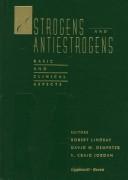
ISBN: 039751719X Year: 1997 Publisher: Lippincott-Raven,
Abstract | Keywords | Export | Availability | Bookmark
 Loading...
Loading...Choose an application
- Reference Manager
- EndNote
- RefWorks (Direct export to RefWorks)
Estrogen --- Estrogens --- Estrogen Antagonists --- Antagonists --- Physiological effect. --- pharmacology. --- Oestrogen --- Hormones, Sex --- Anti-estrogenic diet --- Antagonists&delete& --- Physiological effect
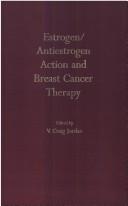
ISBN: 029910480X Year: 1986 Publisher: Madison University of Wisconsin press
Abstract | Keywords | Export | Availability | Bookmark
 Loading...
Loading...Choose an application
- Reference Manager
- EndNote
- RefWorks (Direct export to RefWorks)
Breast --- Breast --- Estrogen --- Estrogen --- Estrogen --- Breast Neoplasms --- Estrogen Antagonists --- Estrogens --- Cancer --- Chemotherapy --- Cancer --- Endocrine aspects --- Antagonists --- Therapeutic use --- Receptors --- Therapeutic use --- drug therapy --- therapeutic use --- therapeutic use
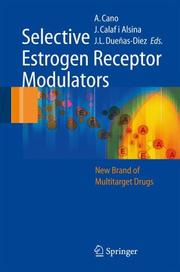
ISBN: 1280716649 9786610716647 3540347429 3540242279 3642445527 Year: 2006 Publisher: Berlin ; New York : Springer,
Abstract | Keywords | Export | Availability | Bookmark
 Loading...
Loading...Choose an application
- Reference Manager
- EndNote
- RefWorks (Direct export to RefWorks)
The increasing awareness on the varied consequences of hypogonadism in distinct organs and systems has supported the notion of estrogens as systemic agents. This observation is congruent with the variety of tissues affected by - trogens when used in hormone therapy formulations on hypogonadic women. Apart from the genital tract and the breast, recognized as traditional targets for estrogens, the skeleton, the vascular tree, or the central nervous system, are good examples of territories that have demonstrated sensitivity to estrogens. This evidence has created great interest, as shown by the great amount of lit- ature that has been produced on the bene?ts and risks associated with the use of estrogens. In parallel to the clinical interest, basic research has improved our kno- edge on the complexities involved in estrogen action at the molecular level. Together with effects mediated through speci?c receptors, a concept that has been the mainstay of the interpretation of estrogen action for years, there is enough evidence to hold the notion of receptor-independent effects. The substantial advances in modern technology applied to research have helped in enlightening the particulars of this versatile action of estrogens. This more detailed knowledge on the sophisticated mechanism of action of estrogens has nourished the emergence of multiple hypotheses speculating with the p- sibility of manipulating estrogen action. The notion that a widely extended regulatory system of cell function, as it is the estrogen receptor machinery, might be modulated at wish has arisen as an attractive, although still elusive postulate.
Selective estrogen receptor modulators. --- Menopause --- Estrogen --- Hormone therapy. --- Antagonists. --- Antagonists, Estrogen --- Antiestrogens --- Estrogen antagonists --- Hormone antagonists --- Estrogen replacement therapy for menopause --- Hormone replacement therapy for menopause --- Hormone therapy --- Estrogen receptor modulators, Selective --- SERMs (Drugs) --- Estrogen replacement therapy --- Hormone replacement therapy --- Agonists --- Antagonists --- Gynecology. --- Rheumatology. --- Endocrinology. --- Internal medicine --- Hormones --- Connective tissues --- Joints --- Gynaecology --- Medicine --- Generative organs, Female --- Diseases --- Gynecology . --- Endocrinology .
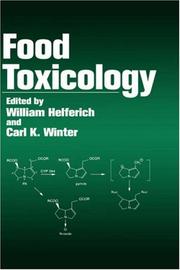
ISBN: 0849327601 Year: 2001 Publisher: Boca Raton, Fla CRC Press
Abstract | Keywords | Export | Availability | Bookmark
 Loading...
Loading...Choose an application
- Reference Manager
- EndNote
- RefWorks (Direct export to RefWorks)
Food Toxicology --- Food Toxicology. --- Nutritionary hygiene. Diet --- Toxicology --- Food --- Agrotechnology and Food Sciences. Toxicology --- Toxicology. --- Food toxicology --- Nutritional toxicology --- Nutritionally induced diseases --- FOOD HYPERSENSITIVITY --- FOOD POISONING --- ESTROGENS --- ESTROGEN ANTAGONISTS --- PLANTS, GENETICALLY MODIFIED --- GENETIC ENGINEERING --- TOXINS --- CHEMOPREVENTION --- PESTICIDES --- FOOD ADDITIVES --- FOOD ANALYSIS --- IMMUNOLOGY

ISBN: 3540650164 3642636675 3642586163 3540655808 Year: 1999 Volume: 1 Publisher: Berlin ; Heidelberg ; New York Springer Verlag
Abstract | Keywords | Export | Availability | Bookmark
 Loading...
Loading...Choose an application
- Reference Manager
- EndNote
- RefWorks (Direct export to RefWorks)
For many years, Springer has been publishing an impressive series of textbooks of pharmacology which have set standards in medical science. Surprisingly, an extensive overview of the current state of the art in research on estrogens and anti estrogens was still lacking. The present two volumes on estrogens and antiestrogens provide a comprehensive review of a field of research in which remarkable progress has been made over the past few years. New insights into the mechanisms of steroid hormone action resulted in a tremendous number of publications from which new principles of preventive and therapeutic appli cations of estrogens and antiestrogens emerged. Although various electronic data bases provide easy access to this copious information, there was a clear necessity for a monograph-style textbook which assesses and summarizes current knowledge in this rapidly expanding field of research. It should be noted, however, that, due to this dynamic development, it is barely possible to comprehensively update every aspect of basic and clinical knowledge on estro gens and antiestrogens. Thus, the intention of the editors was to provide the reader with an overview of the "classic" and most recently explored areas of research and stimulate future interests in basic and applied endocrinology. Estrogens were among the first steroid hormones described in the scientific literature. Since they were first isolated, since the chemical, synthesic and pharmacological characterization of naturally occurring estrogens and, later on, of orally active derivatives, estrogen research has produced continu ously hallmark results in reproductive endocrinology worldwide.
Estrogen --- Estrogens --- Estrogen Antagonists --- Inhibitors --- Physiological effect --- Therapeutic use. --- Physiological effect. --- pharmacology. --- therapeutic use. --- metabolism. --- Pharmacology. --- Metabolism. --- Biochemistry. --- Cell biology. --- Molecular biology. --- Pharmacology/Toxicology. --- Biochemistry, general. --- Cell Biology. --- Molecular Medicine. --- Molecular biochemistry --- Molecular biophysics --- Biochemistry --- Biophysics --- Biomolecules --- Systems biology --- Cell biology --- Cellular biology --- Biology --- Cells --- Biological chemistry --- Chemical composition of organisms --- Organisms --- Physiological chemistry --- Chemistry --- Medical sciences --- Drug effects --- Medical pharmacology --- Chemicals --- Chemotherapy --- Drugs --- Pharmacy --- Composition --- Estrogen replacement therapy --- Oestrogen --- Hormones, Sex --- Anti-estrogenic diet
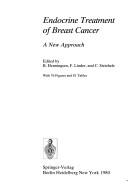
ISBN: 0387097813 0387097805 9786612126451 1282126458 Year: 2009 Publisher: New York : Springer Science+Business Media,
Abstract | Keywords | Export | Availability | Bookmark
 Loading...
Loading...Choose an application
- Reference Manager
- EndNote
- RefWorks (Direct export to RefWorks)
Discoveries in finite semigroups have influenced several mathematical fields, including theoretical computer science, tropical algebra via matrix theory with coefficients in semirings, and other areas of modern algebra. This comprehensive, encyclopedic text will provide the reader – from the graduate student to the researcher/practitioner – with a detailed understanding of modern finite semigroup theory, focusing in particular on advanced topics on the cutting edge of research. Key features: * Develops q-theory, a new theory that provides a unifying approach to finite semigroup theory via quantization; * Contains the only contemporary exposition of the complete theory of the complexity of finite semigroups; * Introduces spectral theory into finite semigroup theory; * Develops the theory of profinite semigroups from first principles, making connections with spectra of Boolean algebras of regular languages; * Presents over 70 research problems, most new, and hundreds of exercises. Additional features: * For newcomers, an appendix on elementary finite semigroup theory; * Extensive bibliography and index. The q-theory of Finite Semigroups presents important techniques and results, many for the first time in book form, and thereby updates and modernizes the literature of semigroup theory.
Semigroup algebras. --- Semigroups. --- Semigroups --- Semigroup algebras --- Mathematics. --- Mathematical logic. --- Algebra. --- Group theory. --- Ordered algebraic structures. --- Group Theory and Generalizations. --- Order, Lattices, Ordered Algebraic Structures. --- General Algebraic Systems. --- Mathematical Logic and Formal Languages. --- Groups, Theory of --- Substitutions (Mathematics) --- Algebra --- Algebraic structures, Ordered --- Structures, Ordered algebraic --- Mathematics --- Mathematical analysis --- Algebra of logic --- Logic, Universal --- Mathematical logic --- Symbolic and mathematical logic --- Symbolic logic --- Algebra, Abstract --- Metamathematics --- Set theory --- Syllogism --- Math --- Science --- Group theory --- Computer science. --- Informatics --- ESTROGEN ANTAGONISTS --- BREAST NEOPLASMS --- THERAPEUTIC USE --- CONGRESSES --- DRUG THERAPY

ISBN: 058500062X 9780585000626 0253313120 0253208173 9780253208170 9780253313126 Year: 1993 Publisher: Bloomington : Indiana University Press,
Abstract | Keywords | Export | Availability | Bookmark
 Loading...
Loading...Choose an application
- Reference Manager
- EndNote
- RefWorks (Direct export to RefWorks)
Menopause --- Estrogen Replacement Therapy --- Estrogens --- Estrogen --- Estrogen Effect --- Estrogen Effects --- Estrogen Receptor Agonists --- Estrogenic Agents --- Estrogenic Compounds --- Estrogenic Effect --- Estrogenic Effects --- Agents, Estrogenic --- Agonists, Estrogen Receptor --- Compounds, Estrogenic --- Effects, Estrogen --- Effects, Estrogenic --- Receptor Agonists, Estrogen --- Estrogen Antagonists --- Estrogen Receptor Modulators --- Estrogen Progestin Combination Therapy --- Estrogen Progestin Replacement Therapy --- Estrogen Replacement --- Replacement, Estrogen --- Therapy, Estrogen Replacement --- Hormone Replacement Therapy, Post-Menopausal --- Postmenopausal Hormone Replacement Therapy --- Replacement Therapy, Estrogen --- Estrogen Replacement Therapies --- Estrogen Replacements --- Hormone Replacement Therapy, Post Menopausal --- Replacement Therapies, Estrogen --- Replacements, Estrogen --- Therapies, Estrogen Replacement --- Change of Life, Female --- Change of life in women --- Female change of life --- Female climacteric --- Climacteric --- Social aspects --- Hormone therapy --- congresses. --- therapeutic use --- psychology --- Estrogen Replacement Therapy. --- therapeutic use. --- psychology.

ISBN: 1281047945 9786611047948 008052642X 0762303883 9780762303885 9780080526423 Year: 1998 Publisher: Greenwich, CT : JAI press,
Abstract | Keywords | Export | Availability | Bookmark
 Loading...
Loading...Choose an application
- Reference Manager
- EndNote
- RefWorks (Direct export to RefWorks)
Breast cancer research has never been in such an exciting and hopeful phase as today. From a clinical perspective, the discovery of genetic markers of risk in a proportion of familial breast cancer cases has opened up new vistas for understanding and ultimately preventing this disease. On the other hand, aggressive - even daring - therapies are being proven to be effective against advanced breast cancer. For the breast cancer experimentalist, this is also a time of great advance. Although animal and cell culture breast cancer models have proven to be of great use, there are now increasing oppo
Breast -- Cancer. --- Breast Neoplasms -- diagnosis. --- Breast Neoplasms -- therapy. --- Early Diagnosis. --- Breast Diseases --- Hormones --- Physiological Effects of Drugs --- Neoplasms by Site --- Skin Diseases --- Neoplasms --- Pharmacologic Actions --- Hormones, Hormone Substitutes, and Hormone Antagonists --- Skin and Connective Tissue Diseases --- Chemical Actions and Uses --- Diseases --- Chemicals and Drugs --- Breast Neoplasms --- Estrogens --- Growth Substances --- Mitogens, Endogenous --- Endogenous Mitogens --- Agricultural Inoculants --- Estrogen --- Estrogen Effect --- Estrogen Effects --- Estrogen Receptor Agonists --- Estrogenic Agents --- Estrogenic Compounds --- Estrogenic Effect --- Estrogenic Effects --- Agents, Estrogenic --- Agonists, Estrogen Receptor --- Compounds, Estrogenic --- Effects, Estrogen --- Effects, Estrogenic --- Receptor Agonists, Estrogen --- Estrogen Antagonists --- Estrogen Receptor Modulators --- Breast Carcinoma --- Cancer of the Breast --- Human Mammary Carcinoma --- Malignant Neoplasm of Breast --- Malignant Tumor of Breast --- Mammary Cancer --- Mammary Carcinoma, Human --- Mammary Neoplasm, Human --- Mammary Neoplasms, Human --- Neoplasms, Breast --- Tumors, Breast --- Breast Cancer --- Breast Tumors --- Cancer of Breast --- Breast Carcinomas --- Breast Malignant Neoplasm --- Breast Malignant Neoplasms --- Breast Malignant Tumor --- Breast Malignant Tumors --- Breast Neoplasm --- Breast Tumor --- Cancer, Breast --- Cancer, Mammary --- Cancers, Mammary --- Carcinoma, Breast --- Carcinoma, Human Mammary --- Carcinomas, Breast --- Carcinomas, Human Mammary --- Human Mammary Carcinomas --- Human Mammary Neoplasm --- Human Mammary Neoplasms --- Mammary Cancers --- Mammary Carcinomas, Human --- Neoplasm, Breast --- Neoplasm, Human Mammary --- Neoplasms, Human Mammary --- Tumor, Breast --- Breast Cancer Lymphedema --- Hormones, Substitutes, Antagonists --- Endocrine Disruptors --- Chemical Actions --- Actions, Chemical --- Actions, Pharmacologic --- Pharmacological and Toxicological Phenomena --- Drug Therapy --- Benign Neoplasms --- Malignancy --- Malignant Neoplasms --- Neoplasia --- Neoplasm --- Neoplasms, Benign --- Cancer --- Tumors --- Benign Neoplasm --- Cancers --- Malignancies --- Malignant Neoplasm --- Neoplasias --- Neoplasm, Benign --- Neoplasm, Malignant --- Neoplasms, Malignant --- Tumor --- Medical Oncology --- Dermatosis --- Dermatoses --- Skin and Subcutaneous Tissue Disorders --- Skin Disease --- Dermatology --- Neoplasms by Sites --- Site, Neoplasm --- Sites, Neoplasm --- Neoplasm Site --- Neoplasm Sites --- Drug Effects on Physiology --- Drug Physiological Effects --- Effects, Drug Physiological --- Physiological Effects, Drug --- Hormone --- Hormone Receptor Agonists --- Agonists, Hormone Receptor --- Receptor Agonists, Hormone --- Endocrine Glands --- Endocrine Breast Diseases --- Breast Disease --- Breast Disease, Endocrine --- Breast Diseases, Endocrine --- Disease, Breast --- Disease, Endocrine Breast --- Diseases, Breast --- Diseases, Endocrine Breast --- Endocrine Breast Disease --- Breast --- Oncology. --- Cancer.
| Listing 1 - 9 of 9 |
Sort by
|

 Search
Search Feedback
Feedback About UniCat
About UniCat  Help
Help News
News